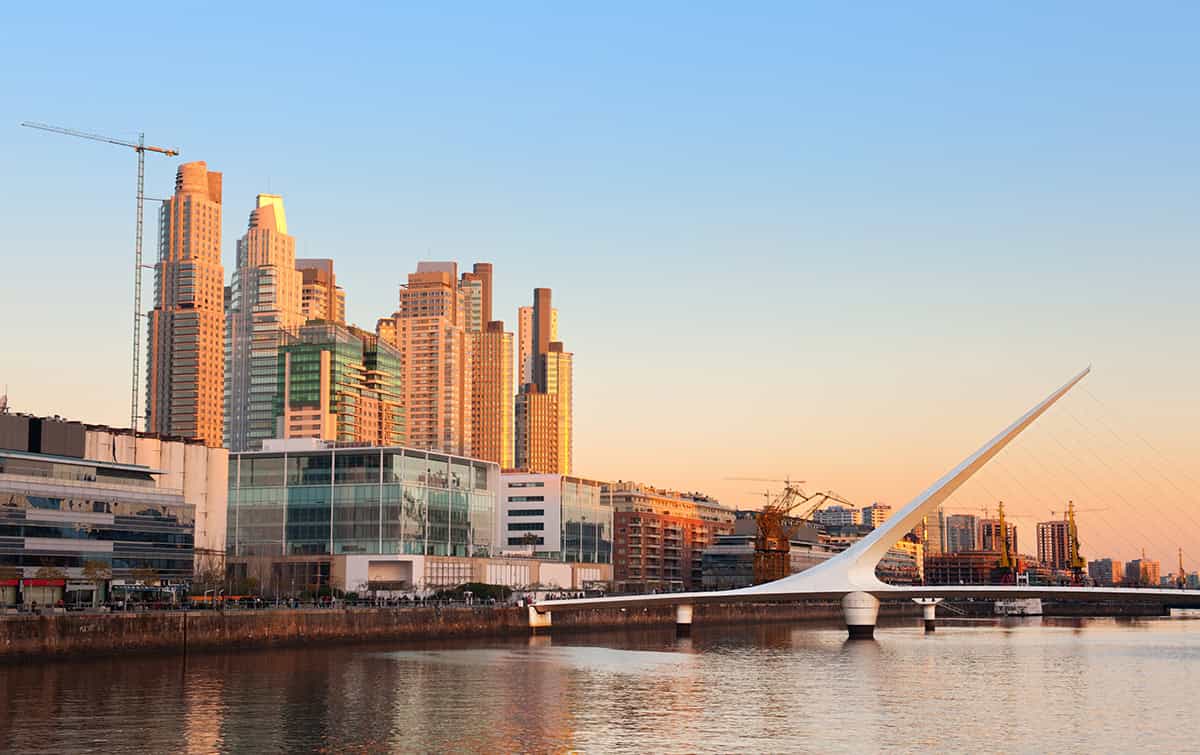“Foreign direct investment [FDI] has always been very small in relation to the size of Argentina’s economy and the flow of capitals in general,” notes economist Pablo Besmedrisnik, a partner and director at VDC Consulting. “While the cepo [currency controls] is in place, this won’t change. But we will probably have some good news for the more powerful economic sectors that are expected to see larger growth.”
The governmental currency exchange control regime, cepo, severely restricts the amount of funds that can be taken out of Argentina. It also dampens foreign and corporate appetite for investments. While most analysts now expect the cepo to be revoked within the year, corporate and foreign investment in Argentina is still confined largely to the reinvestment of surpluses that cannot be taken out of the country.
Megaprojects
The largest foreign investments in Argentina remain largely in mining—lithium, copper, gold and silver—and hydrocarbon-sector projects, according to Besmedrisnik. Chinese giant Ganfeng Lithium, Fortuna Silver Mines and Abrasilver are among the most significant players in the mining sector. On the energy front, Argentine Aconcagua group announced and began multiple renewable, oil and gas projects. Meanwhile, state-owned YPF and Malaysian Petronas group have announced a $50 billion joint project.
“The mining projects are not very significant for the sector—between $30 million and $70 million—but they speak of the investment trend not only in lithium mining, but also in other minerals, says Besmedrisnik. “Aconcagua has announced a project of about $200 million to expand energy production capacity. But it is the Petronas-YPF project that is truly disruptive and large-scale.”
Approved in 2022, the megaproject aims to major liquefied natural gas (LNG) plant in Bahía Blanca. Petronas’ announcement in January that it would commit $180 million to site engineering gave the project more traction.
Once completed, the plant will double Argentina’s LNG production capacity with investments of $20 billion in the plant before 2031 plus another $10 billion in engineering projects and a further $20 billion in new fields at the country’s other megaproject at Vaca Muerta in the Neuquén Basin.
Bahía Blanca project could start exporting six million cubic meters of LNG daily by 2027 and generate $16 billion in annual exports once it has been completed.
“Argentina has one of the largest nonconventional shale oil and gas reserves in the world, and they are just beginning to be exploited,” says Ramiro Ferrari, CEO of Brazil’s Gulf Oil and former Transformation Lead for Downstream, Gas, and Energy at YPF. “The country also has the fourth-largest lithium reserve on the planet, and there is an enormous global need for the mineral in the tech industry.”
Milei’s ambitious privatization agenda leaves YPF uniquely positioned to benefit from the Vaca Muerta oil and gas field.
“YPF could become the main player,” he says, “but the enormity of the field and the fact that exploration and transportation investments in the region are extremely delayed also creates many opportunities for players in other sectors.”
Thanks to its Vaca Muerta formation, Argentina has the potential to be the world’s largest gas exporter but it will need billions of dollars of investment.
Some Wins For An ‘Outsider’ President
Attracting the necessary capital will also depend on Argentina’s success at lowering inflation, accumulating international reserves and taming its currency and monetary troubles.
Milei has scored some wins during the start of his administration, according to Patricia Krause, Latin America economist at French credit-insurer and risk management firm Coface. Monthly inflation fell from 25.5% in December to 13.2% in February.
“The economy is still going to contract by 2.5% or more this year, but Milei has been able to turn two fiscal surpluses in 2024 and improve Argentina’s international reserves by $10 billion,” says Krause.
Milei is a self-proclaimed “anarcho-capitalist” political outsider. He won office promising to shutter the central bank, dollarize the economy and stopping, what he termed, “the orgy of public spending.”
The 53-year-old politician wasted little time after his December inauguration, proposing over 664 economic and political reforms, most of which are in the hands of a hostile Congress.
Nevertheless, he reduced government spending and—most importantly—helped devalue the Argentinian peso by 54% against the dollar. Until then, the peso had an artificial official exchange rate, which, coupled with the cepo, created a multitude of black-market exchange rates with spreads as high as 145%.
“This created enormous uncertainty for corporations, making operations extremely complex or sometimes outright impossible,” says VDC’s Besmedrisnik.
These measures have created more stability for the peso, resulting in an official rate that is lower but closer to market rates, giving companies breathing space for more reliable planning.
According to a recent study by analyst firm BMI, annualized inflation is still growing and is expected to peak midyear but should start to sharply decline by July. It’s expected to reach double-digit levels in the first quarter of 2025. It hovered at around 150% in fourth-quarter 2023 and at 272% early this year.
Argentina has a highly skilled workforce, and Ferrari and Besmedrisnik agree the human component is in place to sustain growth. If Milei’s moves are successful, the traditional sectors can start exporting more and generate the reserves required to further shore up the economy.
“There should be a swift recovery of the meats export business,” Besmedrisnik predicts, “but also soybeans, wheat and corn, which suffered from weather-related problems in 2023. Mid- to long-term, lending and credit services will become very attractive.”
Mining’s Promise
That said, the mining sector is underdeveloped and has ample room for growth, argues Pablo Haddad, CEO and COO of Minera Santa Rita, the country’s largest non-metallic borates mining company.
“Investments in mining projects were held back for more than a decade,” he says. “There is a lot of space for new projects to turn up—world-class mines that could make Argentina a global power in this sector. Several projects are currently in development. Of course, the economic reforms are not complete, but the fact that there is now a horizon is very positive for the mining industry.”
